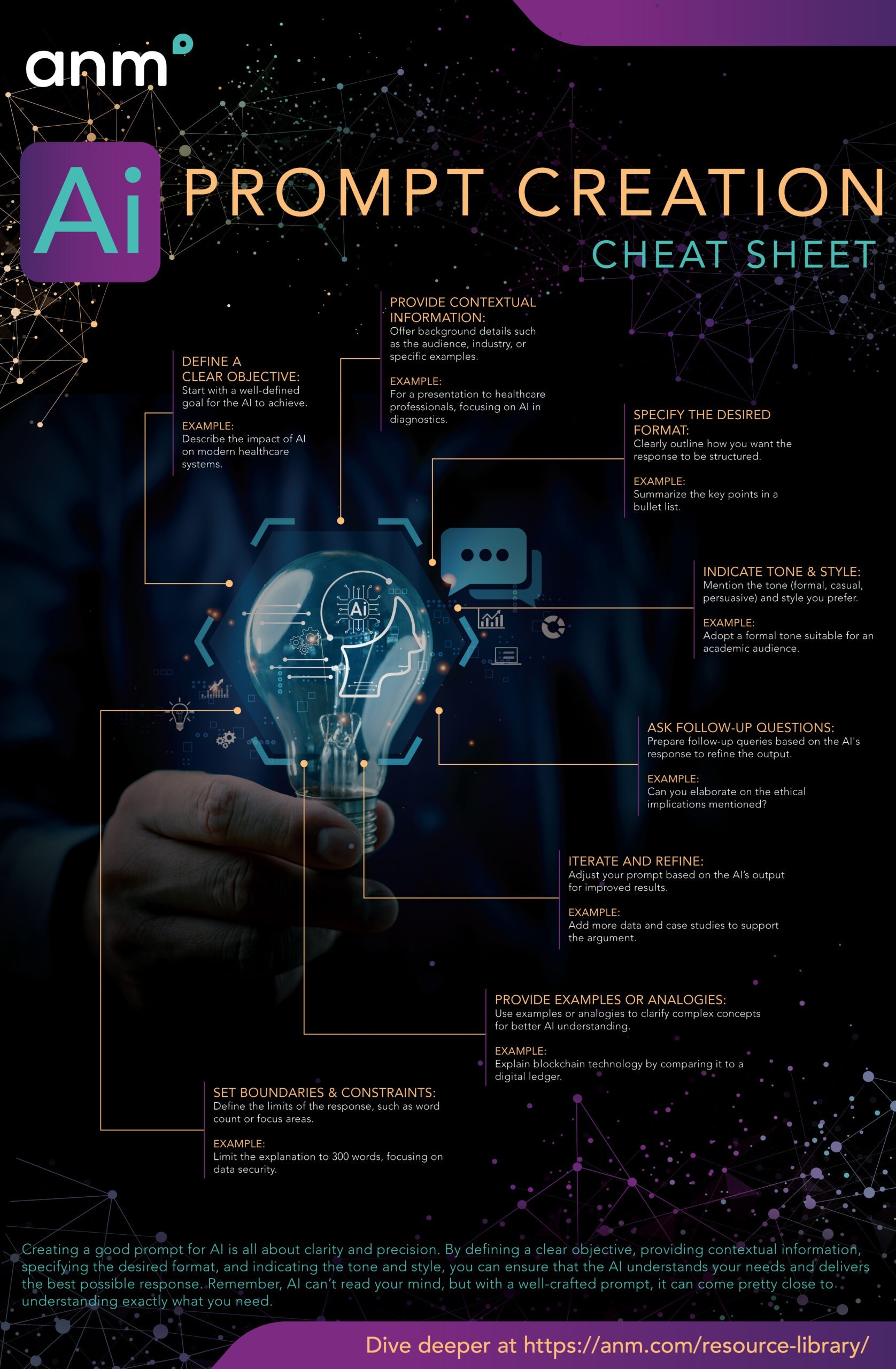AI Prompt Creation Cheat Sheet
Creating a good prompt for AI is all about clarity and precision. By defining a clear objective, providing contextual information, specifying the desired format, and indicating the tone and style, you can ensure that the AI understands your needs and delivers the best possible response. Remember, AI can’t read your mind, but with a well-crafted prompt, it can come pretty close to understanding exactly what you need.
Define a Clear Objective:
- Start with a well-defined goal for the AI to achieve.
- Example: “Describe the impact of AI on modern healthcare systems.”
Provide Contextual Information:
- Offer background details such as the audience, industry, or specific examples.
- Example: “For a presentation to healthcare professionals, focusing on AI in diagnostics.”
Specify the Desired Format:
- Clearly outline how you want the response to be structured.
- Example: “Summarize the key points in a bullet list.”
Indicate Tone and Style:
- Mention the tone (formal, casual, persuasive) and style you prefer.
- Example: “Adopt a formal tone suitable for an academic audience.”
Ask Follow-Up Questions:
- Prepare follow-up queries based on the AI’s response to refine the output.
- Example: “Can you elaborate on the ethical implications mentioned?”
Iterate and Refine:
- Adjust your prompt based on the AI’s output for improved results.
- Example: “Add more data and case studies to support the argument.”
Provide Examples or Analogies:
- Use examples or analogies to clarify complex concepts for better AI understanding.
- Example: “Explain blockchain technology by comparing it to a digital ledger.”
Set Boundaries and Constraints:
- Define the limits of the response, such as word count or focus areas.
- Example: “Limit the explanation to 300 words, focusing on data security.”
Related Resources

Microsoft 365 at Microsoft Build 2025: Copilot Gets Smarter, More Customizable, and More Collaborative

From Reactive to Proactive: How AI Is Redefining Cyberthreat Detection

Microsoft Teams at Enterprise Connect 2025: Leading the Future of Collaboration

Exchange Server On-Prem? Get Ready for CU15 and the Future of Exchange SE
No results found.
